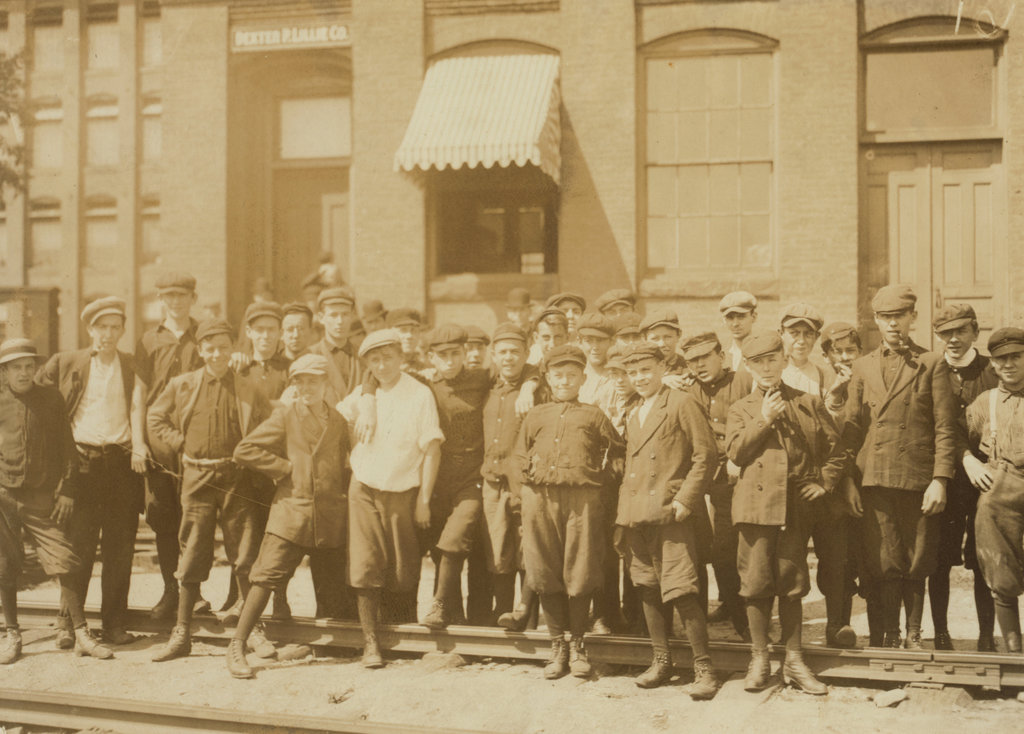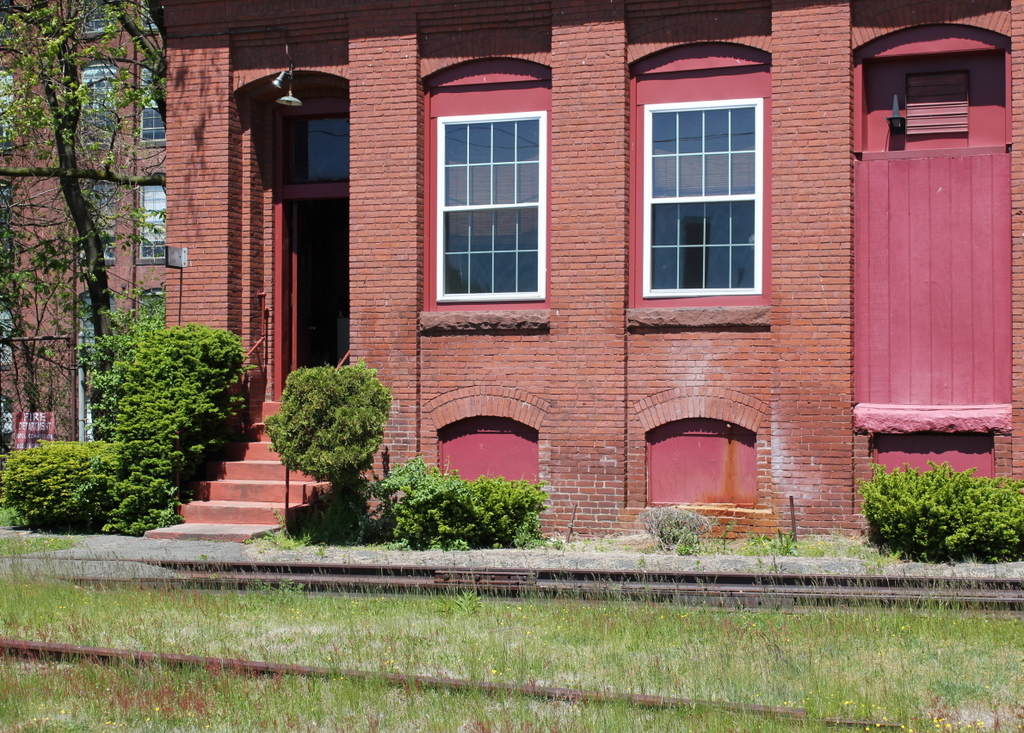Another scene outside of the Indian Orchard Manufacturing Company in September, 1911. Image courtesy of the Library of Congress, National Child Labor Committee Collection.
The scene in 2020:
As with the previous posts here and here, the 1911 photo was taken by Lewis Wickes Hine for the National Child Labor Committee to work to reform the essentially nonexistent child labor laws of the early 20th century. His caption for this photo reads:
“Group in front of Indian Orchard Mfg. Co. Everyone in public was working, (see previous lists of names).] Location: Indian Orchard, Massachusetts.”
I’m not sure which “previous list” he is referring to, but it is probably the one from this photo from the Library of Congress, with a caption that reads:
“Group of workers from Indian Orchard Mfg. Co. including following names and others: Mose Fournier, 297 Worcester St.; in Mr. Karnes’ room. Wilfred Croteau lives on Worcester St., in front of Police Station. Doffer in Mr. Baker’s twisting room. Paul Phaneuf, 189 Franklin St., in Mr. Karnes’ spinning room. Leo La Francis, 12 Quebec St. In beaming room.] Location: Indian Orchard, Massachusetts.”
As the names of the workers suggests, most of the children in the photo were probably recent immigrants from Quebec. During this time period, there was large-scale immigration of French-Canadians (including my own ancestors) who came to the Springfield area to work in the factories. Although the children have in all likelihood passed away, many of them probably have descendants who still live in the area, perhaps unaware of the role that their ancestor played in the history of child labor laws.
Today, the building is still there, although the company itself was sold in 1932. Today, the site is still used for industrial purposes, albeit with older workers older than middle school age. Even the railroad tracks are still there, and a few of the rails appear to be dated 1909, which would suggest that the ones there today may have been the exact same ones that the boys were standing on in 1911.


